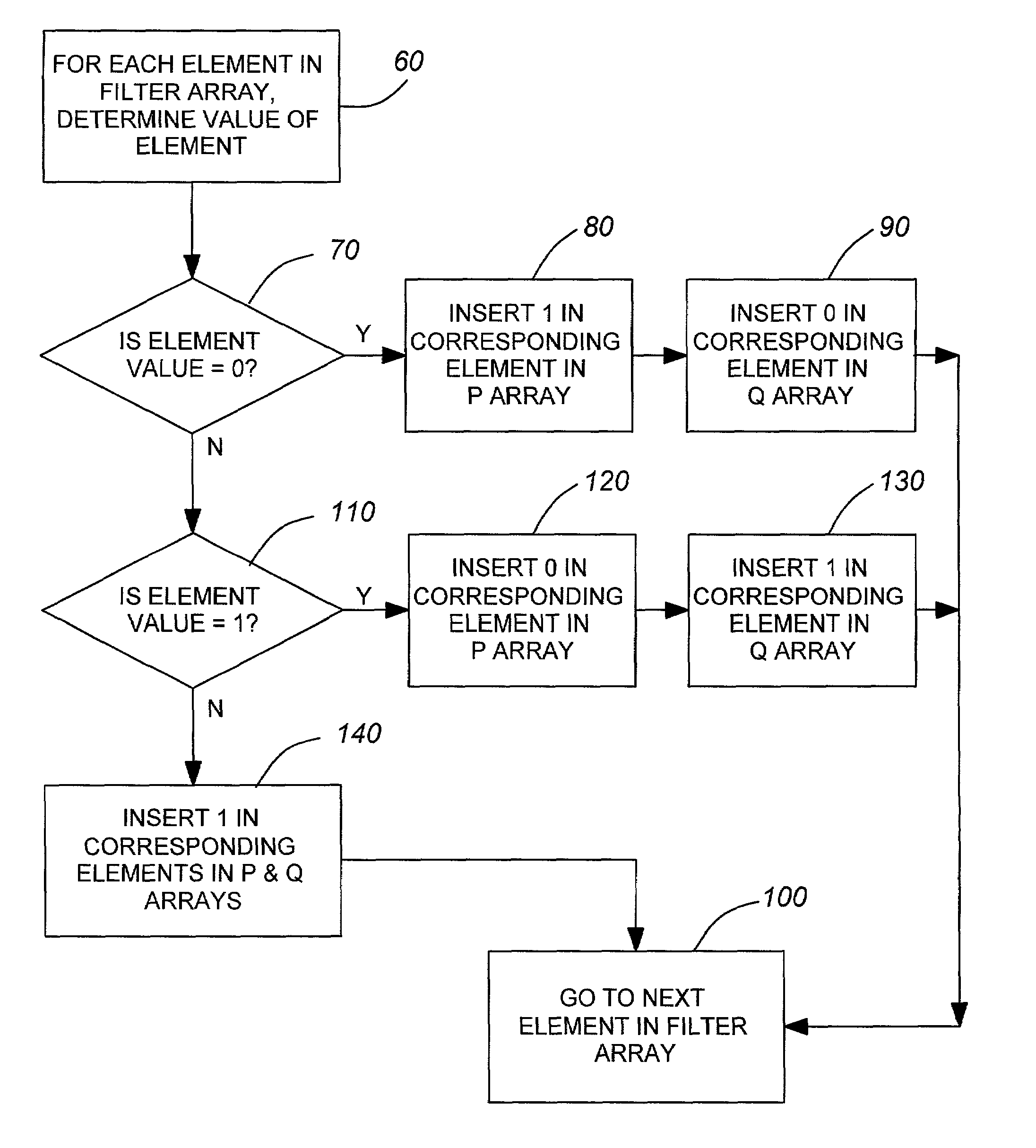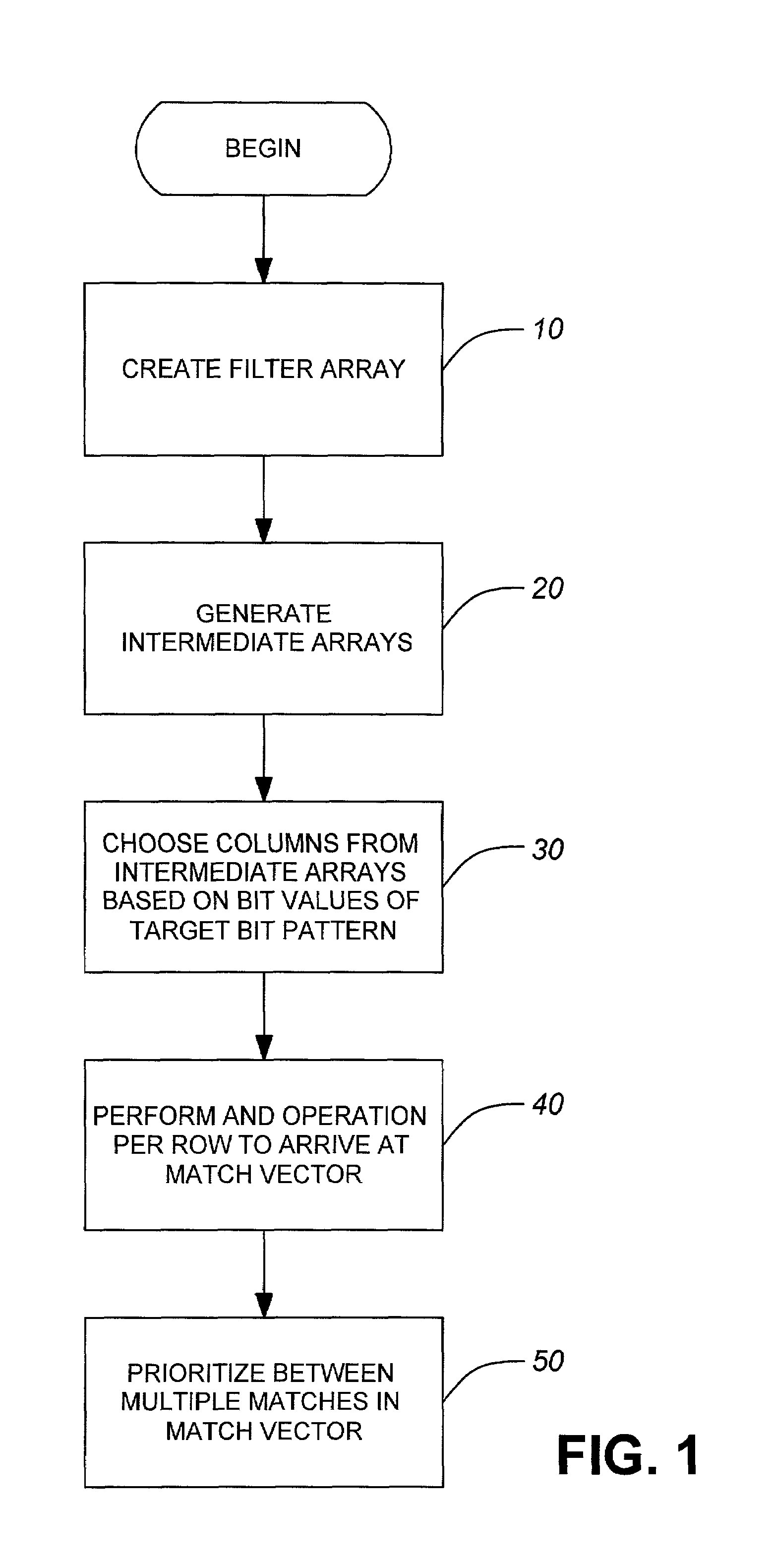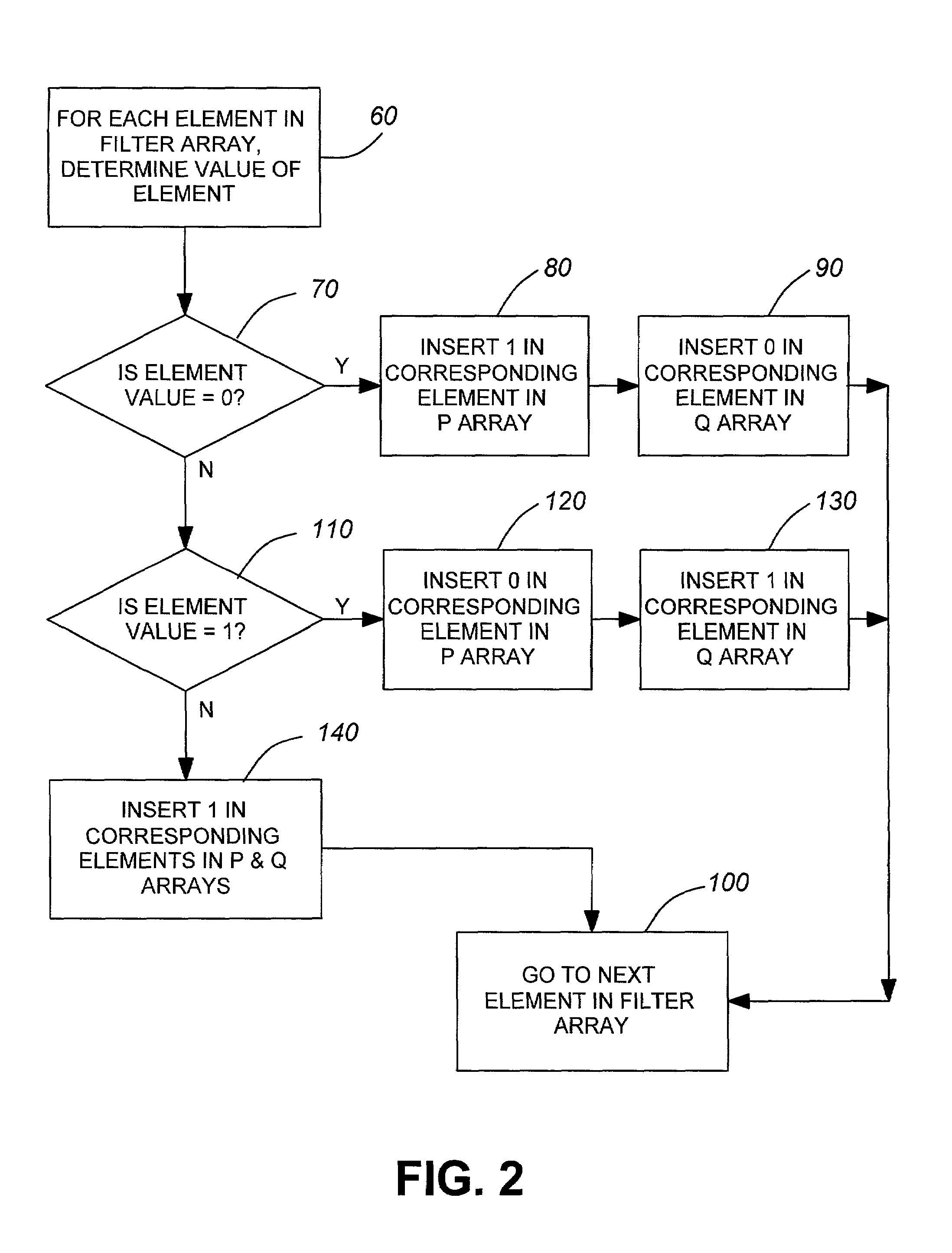Multi-field classification using enhanced masked matching
a multi-field classification and enhanced masking technology, applied in the field of bit pattern matching, can solve the problems of high cost of supporting a large rule set, unsuitable high-speed implementation approach, and ambiguity
- Summary
- Abstract
- Description
- Claims
- Application Information
AI Technical Summary
Benefits of technology
Problems solved by technology
Method used
Image
Examples
Embodiment Construction
[0050]To clarify the terminology used in this description the following definitions are provided:
[0051]Filter: A filter defines a mask-matching rule. The method below assumes that a filter contains W bits and forms a concatenation of all the fields at which the classifier needs to look. A filter is further defined as a W-bit 3-value rule set. Each bit can take either ‘1’, ‘0’, or ‘x’, which means that the bit needs to be 1, 0, or don't-care (x) to match this filter. Each rule can also be termed a filter bit.
[0052]Rule Set: A rule set is a collection of N filter rules indexed from 1 to N. The rule set defines a single order of priority. A rule with larger index value has higher priority than a rule smaller index. The symbols F[0] . . . F[N−1 ] are used to represent filters 0 . . . N. A rule set can be represented by the 3-value matrix F[N,W], where F[i,j] means the mask matching value of rule i bit j.
[0053]Field Vector: The packet field data to be classified. It is W-bit 2-value vect...
PUM
 Login to View More
Login to View More Abstract
Description
Claims
Application Information
 Login to View More
Login to View More - R&D
- Intellectual Property
- Life Sciences
- Materials
- Tech Scout
- Unparalleled Data Quality
- Higher Quality Content
- 60% Fewer Hallucinations
Browse by: Latest US Patents, China's latest patents, Technical Efficacy Thesaurus, Application Domain, Technology Topic, Popular Technical Reports.
© 2025 PatSnap. All rights reserved.Legal|Privacy policy|Modern Slavery Act Transparency Statement|Sitemap|About US| Contact US: help@patsnap.com



